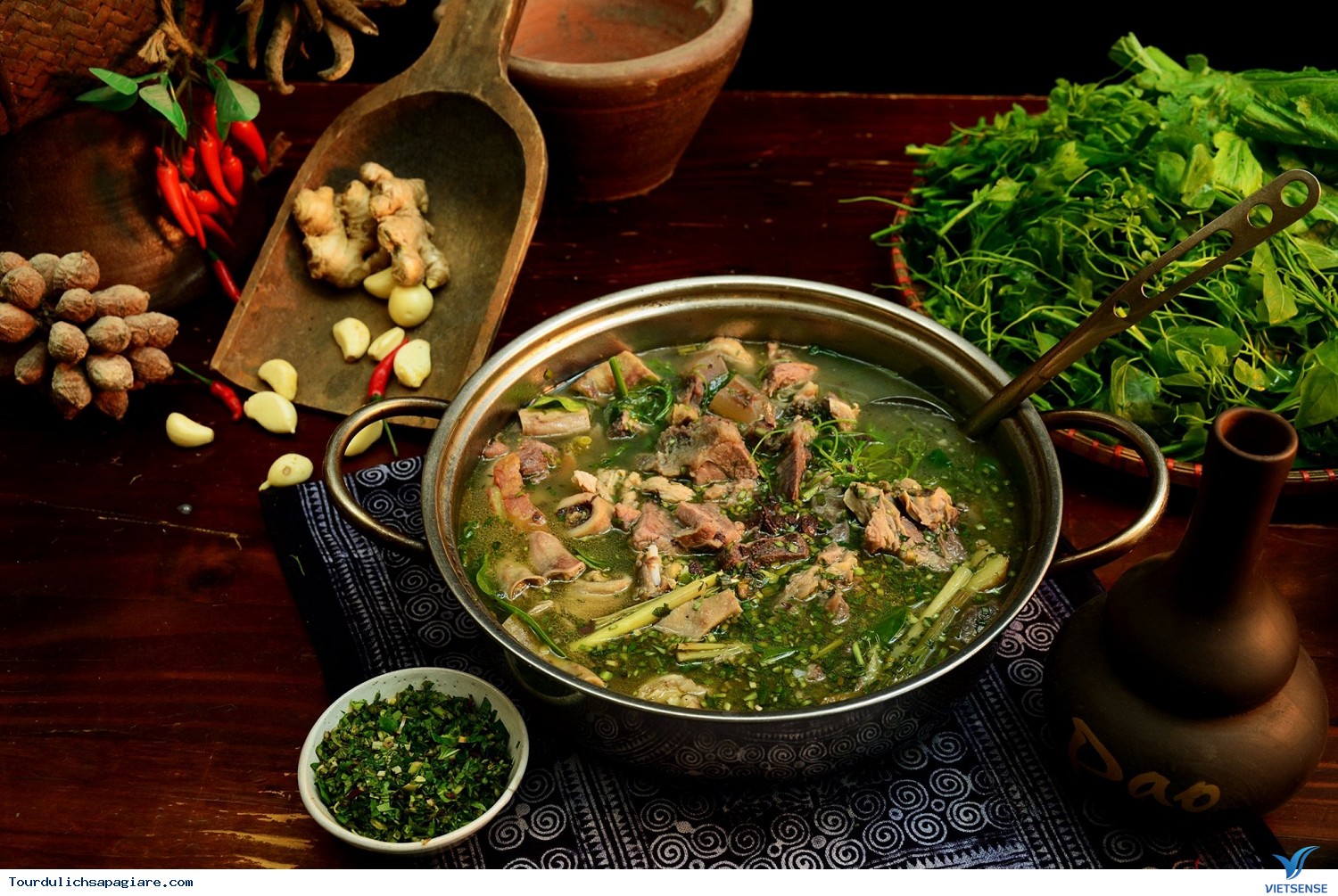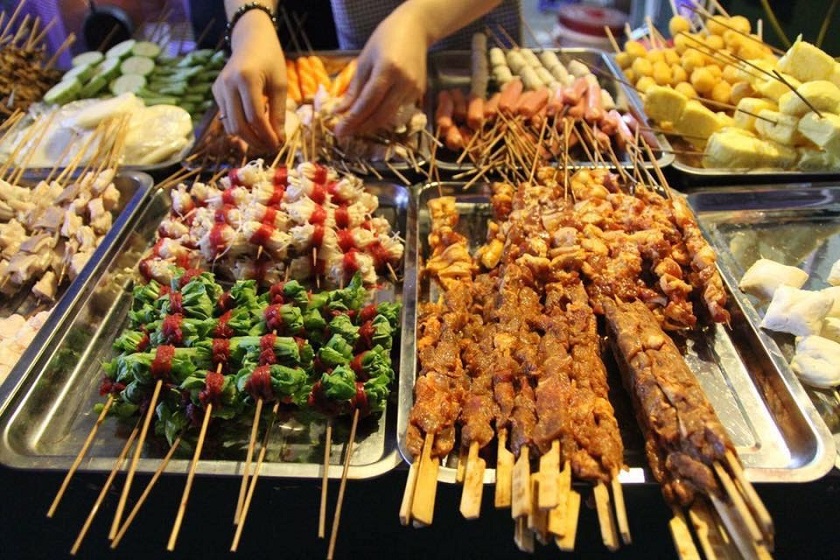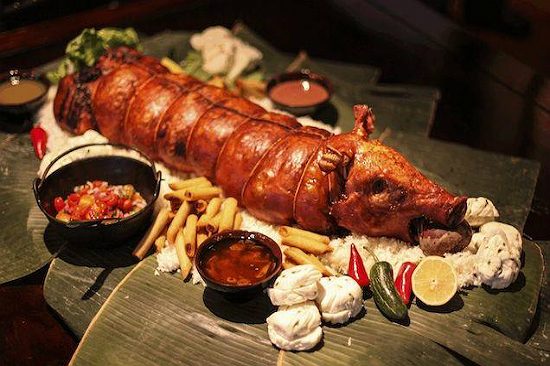Located in the northwest of the country, Sapa is a highland district in Lao Cai province, a humble and quiet land but contains many wonders of natural scenery. Immersed in the floating clouds, Sa Pa town is like a city in a magical mist, painting a charming picture of mountains and water. This place has an invaluable resource that is a cool, fresh climate with many diverse nuances.
Tourists coming to Sapa are not only attracted by the atmosphere and majestic scenery of Ham Rong mountain, Cat Cat village, Love waterfall, Fansipan peak,... but are also captivated by the unique specialties of this land.
1. Thang co
Thang co - a specialty of the Mong people often found in villages and markets of the Mong people. Sapa Thang Co is made from horse internal organs (heart, liver, intestines, horse blood, ...) and 12 spices (cardamom, cinnamon, lemongrass, ginger, ... and Thang Co is the 12th spice). . When eating, people will scoop the broth into the hot pot, slice the horse meat and drop it in.

Thang co is often eaten with vegetables dipped in mustard greens, kohlrabi, hot pot cabbage, etc. When eating thang co, you must drink it with corn wine, a warm, fragrant wine made from the quintessence of the mountains and forests. When food and drinks blend together, it creates a pleasant and unforgettable feeling
2. Sapa Peach
The sweet, sour, astringent taste and unmistakable aroma are the unique flavor of genuine Sapa peaches. Sapa peaches are covered with a thin layer of marble-colored fur, mixed with blood-colored stains with black dots. Sapa peaches are sold scattered on the side of the town's roads, but mainly brought to Sapa market in baskets, baskets on the shoulders of Mong people, on carts arranged in a tower shape, covering the sidewalks of the market streets.

A basket of Sapa peaches will definitely be a precious gift from the Northwest heaven and earth for friends and relatives.
3. Barbecue
In the cold weather here, you definitely don't forget to enjoy delicious and diverse grilled food such as: grilled pork skewers, grilled pork belly, quail, beef rolled with mustard greens or beef rolled with enoki mushrooms. skewers, etc. Mustard greens are a specialty vegetable here. The strange bitter taste of mustard greens that lingers on the tip of the tongue will make visitors excited.

Among the many pleasures enjoyed by Sapa tourists during their long days of travel here, Sapa grilled food is becoming a very distinct "brand" that cannot be confused with other localities. other.
Many tourists say: If you come to Sa Pa and don't enjoy grilled food, you really haven't truly discovered the uniqueness, richness and poetry of Sa Pa culinary culture.
4. Buffalo meat kept in the kitchen
Unlike other places, Sapa people's kitchen buffalo meat is made entirely from Ban buffalo, marinated with esoteric spices and dried with the heat and smoke of a wood stove from day to day. Thanks to that, Sapa kitchen buffalo meat has a very characteristic rich taste. The meat is sold quite a lot in Sa Pa at a price of about 800,000 - 1,000,000 VND/kg depending on the quality of the buffalo meat when dried.
Dried buffalo meat grilled with charcoal or grilled in the microwave while eating a small cart dipped in chili sauce and drinking apple wine or Shan Lung makes all your senses burn in the chilly heat of the Northwest mountains and forests

Kitchen buffalo meat is sold quite a lot in Sapa, but to buy quality buffalo meat from the H'Mong people, you should buy it at the ethnic village while visiting the village.
5. Armpit pig
The Muong pig breed in Sapa is called like that because these pigs are very small, adults only weigh 4 - 5 kg. Sellers and buyers just need to "take it under their armpits" and take it away.
Armpit pigs are pigs that roam freely in the mountains and hills. They scrape the ground for food on steep slopes and struggle all year round to cope with the cold, causing this breed of pigs to shrink. An adult "armpit pig" weighs less than ten kilograms.

When processing pork, people often clean it, marinate it, then leave it whole to grill or roast. The piece of meat is thin, from the outside to the inside there is only a layer of crispy skin and then a layer of very soft, sweet lean meat, less than 2 cm thick.
Enjoying Sapa specialties in the cold weather without inhaling some Sapa wine is a big mistake. And what types of wine are considered the most famous in Sapa, and how to do it? Remember to follow the next article of Vietnam Expedition Travel!






